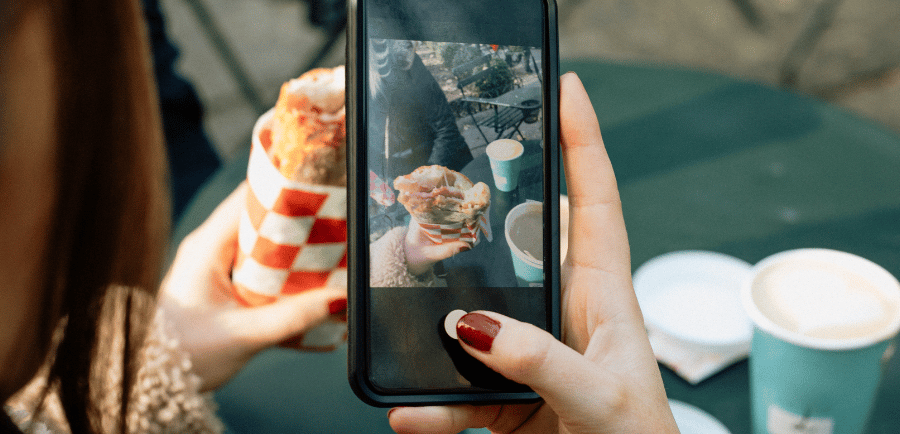How Social Media is Changing the Way We Eat
While those traditions still hold their charm, the digital age has thrown a new, vibrant ingredient into the mix: social media.
7/13/20253 min read


From Plates to Pixels: How Social Media is Changing the Way We Eat
Remember a time when deciding what to eat involved flipping through cookbooks or simply asking a friend for a recommendation? While those traditions still hold their charm, the digital age has thrown a new, vibrant ingredient into the mix: social media. From drool-worthy Instagram feeds to viral TikTok recipes, these platforms are fundamentally reshaping our relationship with food, influencing everything from what we crave to where we dine.
So, how exactly is social media stirring up our eating habits? Let's dig in.
1. The Visual Feast: Eating with Our Eyes (and Phones)
It's no secret that we eat with our eyes first. Social media has amplified this tenfold. Platforms like Instagram and TikTok are a constant parade of perfectly plated dishes, vibrant ingredients, and aesthetically pleasing culinary creations. This visual culture has transformed food into an art form, making us more conscious of presentation than ever before.
"Instagrammable" Food: Restaurants now design dishes with social sharing in mind, ensuring they look as good as they taste. From colourful smoothie bowls to elaborate dessert art, the visual appeal can drive people through the doors as much as the flavour.
The Rise of Food Photography: Everyone's a food photographer now! The pursuit of that perfect shot – with ideal lighting, props, and angles – has become an integral part of the dining experience for many.
2. Trendsetters and Tastemakers: The Power of Food Influencers
Gone are the days when traditional food critics held all the sway. Today, food influencers – bloggers, chefs, and everyday foodies with massive online followings – are the new culinary tastemakers.
Recipe Revolution: Viral recipes spread like wildfire, turning once-niche dishes (think Dalgona coffee or baked feta pasta) into global phenomena. Influencers share easy-to-follow tutorials, inspiring millions to experiment in their own kitchens.
Restaurant Discovery: A glowing review or a visually stunning post from a popular food influencer can skyrocket a restaurant's popularity overnight. Many diners now turn to social media first when looking for new places to eat, relying on authentic (or seemingly authentic) recommendations.
Product Endorsements: From new snack brands to kitchen gadgets, influencers play a significant role in introducing and legitimising food products, often leading to rapid sales boosts.
3. Convenience and Cravings: Instant Gratification at Our Fingertips
Social media's impact isn't just about inspiration; it's also about immediate access. The seamless integration of food discovery with food delivery apps means a tempting image can translate directly into an order with just a few taps.
Impulsive Eating: Seeing delicious food pop up in your feed can trigger cravings, and the ease of ordering means those impulses are often acted upon without much thought.
Hyper-Targeted Advertising: Algorithms know what you like. Social media platforms use your Browse habits and preferences to serve up targeted food ads, making it even harder to resist.
4. Community and Culture: Sharing Our Culinary Worlds
Social media has fostered vibrant online food communities, allowing people to connect over shared culinary interests, explore diverse cuisines, and even debate dietary choices.
Global Flavours: We're exposed to a wider array of international dishes and cooking techniques than ever before, expanding our culinary horizons and encouraging experimentation.
Dietary Movements: Whether it's plant-based eating, gluten-free lifestyles, or sustainable sourcing, social media provides platforms for these movements to grow, share information, and influence others.
User-Generated Content: Beyond influencers, everyday users share their home-cooked meals, restaurant experiences, and food adventures, contributing to a rich tapestry of online food culture.
5. The Flip Side: Challenges and Considerations
While social media offers incredible opportunities for food exploration, it's not without its drawbacks:
Unrealistic Portrayals: The highly curated nature of food content can create unrealistic expectations about how food should look and be prepared.
Misinformation: Anyone can share "nutrition advice" or extreme diet trends, making it challenging for consumers to discern credible information.
Body Image and Disordered Eating: Constant exposure to highly edited images and certain dietary narratives can contribute to negative body image and unhealthy eating patterns.
Eating Mindfully in a Digital World
Social media has undeniably revolutionized the way we eat, discover, and interact with food. It offers a fascinating window into global culinary trends and connects us with a passionate community of food lovers. However, being mindful of its influence – appreciating the visual artistry, discerning credible information, and recognizing the instant gratification loop – is key to navigating this delicious digital landscape with a healthy perspective.
So, next time you're scrolling through your feed and see something that makes your stomach rumble, remember the powerful forces at play, and enjoy your meal, whether it's perfectly pixelated or simply delicious in real life!

